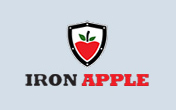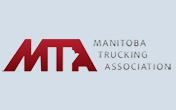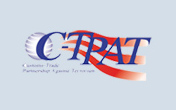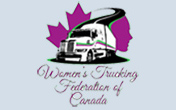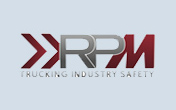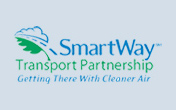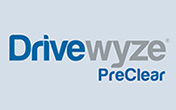Portage Transport's Accessibility Policy
Executive summary
Portage Transport is committed to creating and providing accessibility to include everyone. Our efforts to achieve accessibility involve identifying, removing, and preventing barriers for employees, customers, and the public.
We recognize that accessibility is an ongoing and integral part of being an inclusive organization. That’s why the plan we’ve developed to continue improving our accessibility builds on our equity, diversity and inclusion mindset and practices.
We can be inclusive and accessible only when we understand and meet the needs of those with disabilities. For that reason, this plan has been developed in consultation with employees who identify as having a disability and with external community members, including organizations that serve people with disabilities.
After conducting individual interviews and reviews of the facilities, the plan was developed to identify barriers and actions to improve accessibility in six of the seven priority areas under the Accessible Canada Act.
In collaboration with the Safety and Compliance and HR Team, Portage will raise the visibility of the plan and support the implementation and evaluation of key actions over time to create safe and accessible Portage Transport for everyone.
While this is Portage Transport’s first formal accessibility plan, it builds on previous investments and successes. These include:
- Improvements to the accessibility of our office spaces and facilities
Through ongoing dialogue, conversations, training, and awareness, Portage Transport plans on identifying and removing the barriers that persons with disabilities face within its organization and the broader trucking industry.
POLICY:
This accessibility plan applies to all Portage Transport employees, contractors, and customers.
Policy Mission Statement
At Portage Transport Inc. we are committed to providing a safe, inclusive, and accessible work environment for all employees, contractors, visitors, and customers. A place where all individuals are treated with respect and dignity. Portage Transport is committed to the following:
- Identifying and responding to workplace accessibility in all 7 priority areas, and
- Effectively addressing any barriers or concerns identified by any employee, visitor, contractor, or customer
Feedback
Our commitment to inclusion and accessibility incorporates a feedback process that employees, contractors, visitors, and customers can share their ideas and input with us. To provide feedback on accessibility, use one of the contact methods below. If you require support while providing feedback, let us know, and we will do our best to meet your needs.
Contact: Laura Kirchner
Mailing address: 1450 Lorne Avenue East, Portage la Prairie, Manitoba, R1N 4A2
Email: operatorsupport@portagetransport.com
Webpage: www.portagetransport.com
Toll-free, North America: 1-800-251-4607
Definitions
Accessibility: The degree of ease that something (e.g., device, service, physical environment, and information) can be accessed, used, and enjoyed by persons with disabilities. The term implies conscious planning, design, or effort to make sure something is barrier-free to persons with disabilities. Accessibility also benefits the general population by making things more usable and practical for everyone, including older people and families with small children.
Barrier: The Accessible Canada Act defines a barrier as “anything—including anything physical, architectural, technological or attitudinal, anything that is based on information or communications or anything that is the result of a policy or a practice—that hinders the full and equal participation in society of persons with an impairment, including a physical, mental, intellectual, cognitive, learning, communication or sensory impairment or a functional limitation.”
Disability: The Accessible Canada Act defines a disability as “any impairment, including a physical, mental, intellectual, cognitive, learning, communication or sensory impairment—or a functional limitation—whether permanent, temporary or episodic in nature, or evident or not, that, interaction with a barrier, hinders a person’s full and equal participation in society.”
Reporting
As required by the Accessible Canada Act, Portage Transport will publish a status report every year that shows our progress against our commitments. This plan will be reviewed every three years and will report annually on overall progress and how the plan has impacted on the experience of all staff, contractors, customers, and the public.
The Accessible Canada Act includes seven principles:
- Everyone must be treated with dignity.
- Everyone must have the same opportunity to make for themselves the life they are able and wish to have.
- Everyone must be able to participate fully and equally in society.
- Everyone must have meaningful options and be free to make their own choices, with support if they desire.
- Laws, policies, programs, services, and structures must consider the ways that different kinds of barriers and discrimination intersect.
- Persons with disabilities must be involved in the development and design of laws, policies, programs, services, and structures.
- Accessibility standards and regulations must be made with the goal of achieving the highest level of accessibility.
Addressing areas identified in the Accessible Canada Act
Barriers identified in 6 of 7 areas of the Act, as well as actions to address them are as follows:
1. Employment
Accessibility must be ensured at every stage of employment. This means accommodations must be made available to candidates and employees upon request and accessibility should be embedded into policies, processes, and practices, including:
- Recruitment
- Employee onboarding
- Professional development
- Long-term disability leaves
- Return-to-work processes
Desired outcomes
- Portage Transport recruits qualified candidates with disabilities according to their availability on the labour market for open occupations
- Employees with disabilities report being treated with respect at a level that matches those of all employees, using one on one check-ins and PT surveys.
Barrier 1
Our current number of job applicants and employees hired with disabilities is lower than labour market availability.
Actions
- Educate and train the recruitment and hiring employees on accessibility and how they can ensure barrier-free hiring, selection, and accommodation process.
- Benchmark current recruitment, selection, and onboarding practices against leading accessibility practices.
- Increase job opening visibility to reach larger target markets that include persons with disabilities.
- Increase visibility of Portage Transport’s commitment to the inclusion of persons with disabilities in our workplaces.
Barrier 2
Employees with disabilities are more hesitant to identify themselves during and after the hiring process.
Actions
- Review human resources policies with an inclusion and accessibility lens.
- Research and launch an online learning module on accessibility to promote inclusive behaviors.
2. Built environment
Portage Transport's built environment is made up of human-made structures, features, and facilities—it’s the physical environments where people live and work.
Desired outcomes
- The main public entry points and all office building sites are easy for employees and visitors with disabilities to access.
- To identify physical barriers quickly and effectively. Either removing where fiscally possible or creating awareness and alternate routes where possible.
Barrier 3
Despite recent renovations, and workspace access on terminal yard sites, some spaces continue to limit the mobility of employees and visitors with disabilities.
Actions
- Automate door openers in the primary building entryways.
- Add accessibility advisory to Portage Transport's monthly health and safety committee meetings.
3. Information and communication technologies
Information and communication technologies are various technological tools and resources used to transmit, store, create, share, or exchange information.
Desired outcomes
- An increase in awareness of all available self-serve technology and accessibility features to increase personal employee, contract, or individual experiences and participation.
- Employees and contractors are more fully able to participate in training, meetings and other events hosted at Portage Transport.
Barrier 4
The requirement for individuals to request that accessibility features be turned on or activated limits the ability of employees and guests with disabilities to use them.
Actions
- Raise awareness of accessibility features for in-person and remote meeting technologies.
- Train and increase the IT department’s knowledge and understanding of all available accessibility features surrounding Portage Transport supported software and web managed platforms.
- Ensure that Portage Transport's website continues to meet web accessibility requirements.
Barrier 5
The inaccessibility of technologies in commonly used meeting and collaboration spaces can limit the ability of facilitators and attendees to participate meaningfully in group meetings and training sessions.
Actions
- Review the technology used in common conference, learning and meeting spaces to ensure that it meets an elevated level of accessibility requirements.
4. Communication other than ICT
Portage Transport recognizes that people give, receive, and understand communication in different ways. An organization is expected to take these differences into account and provide its communications in various accessible formats for people who require them.
Desired outcomes
- Portage Transport will provide alternate formats for key documents, internally and externally, for people who request them in an accessible format.
Barrier 6
Portage Transport does not have multiple communication mediums prepared to offer employees, contractors or the public if requested.
Action
- Provide training on accessibility for employees who prepare documentation or communication material for the company.
- Examine and evaluate the Portage Transport website, social media platforms, orientation presentations and practices to plan and develop more accessible formats. Such as alternate text formats, high contrast fonts, and audio or visual aids if necessary.
5. Procurement of goods, services, and facilities
Portage Transport recognizes and supports its procurement practices including accessibility as part of the provision of goods, services, and facilities, where appropriate (e.g., accessible technology, materials, and amenities).
Desired outcomes
- To have accessibility at the forefront when reviewing procurement practices, where applicable.
Barrier 7
Accessibility considerations are not fully embedded in the Bank’s procurement framework and tools.
Actions
- Revise the procurement policy to reinforce that accessibility must be considered when procuring goods and services.
- Embed accessibility considerations into procurement templates (e.g., requests for proposals) so that they inform the selection of external vendors, products and services that will abide by the requirements of the Accessible Canada Act.
6. Design and delivery of programs and services
Portage Transport's number one aspect of business is its customers and employees. The design and delivery of programs and services should show as a company its fostering accessibility. This includes the programs and information for current employees, customers, contractors, and the public and how they apply to them.
Desired outcomes
- To review and maintain a strong culture of accessibility when it comes to the design, implementation, and delivery of its programs to employees, contractors, and customers.
Barrier 8
The lack of a comprehensive and documented approach to setting the accessibility standards for Portage Transport programs and processes results in inconsistent experiences for clients.
Actions
- Develop internal accessibility best practices and review the accessibility levels at key points of interaction with employees and customers to ensure they meet these standards.
Barrier 9
A lack of standard measures to assess internal and external programs, events and engagements limits the evaluation of their accessibility.
Actions
- Standardize Portage Transports approach to collecting accessibility-related feedback and reporting on the accessibility of programs, events, and engagements.
- Develop a high-level accessibility metric to track overall change resulting from the accessibility plan and embed it (or similar metrics) into internal reporting.
7. Transportation
Portage Transports focus is around the transportation and delivery and specialized service of goods. It does not coordinate transportation of people or passenger-based services. This means that standards for those such transportation services are not in the scope of this plan. However, Portage Transport is committed to identifying and eliminating barriers surrounding its Fleet where applicable and safe to do so in accordance with all Health and Safety legislation, laws and or other applicable regulations. We are committed to reviewing our policies and communications related to travel and transportation, where applicable, to ensure they are barrier-free.
Consultation process:
Portage Transport remains committed to building an accessible culture and environment where everyone, including people with disabilities, can participate and feel included. Our accessibility plan was developed in consultation with onsite employees, including employees with disabilities and their allies.
We heard from our employees’ teams involved in helping achieve accessibility goals in several ways:
- We invited employees with disabilities to share feedback in one-on-one sessions or via completion of an anonymous survey.
All conversations asked for feedback and recommendations on how Portage Transport can improve its policies, procedures, facilities, communication, and technological tools to better serve persons with disabilities in an inclusive manner or to highlight barriers Portage Transport faces by persons with disabilities.
We also looked at outside sources and feedback from external community organizations. These include:
- Organizations serving people with disabilities to review and improve Portage Transports physical space, programs, and services.
- External reviews arranged by the Human Resource Management team of the accessibility of our communication and technological tools used by employees, contractors, and customers
We will continue to consult with outside organizations and to survey employees, including those with disabilities, to ensure we continue to support those with disabilities.










